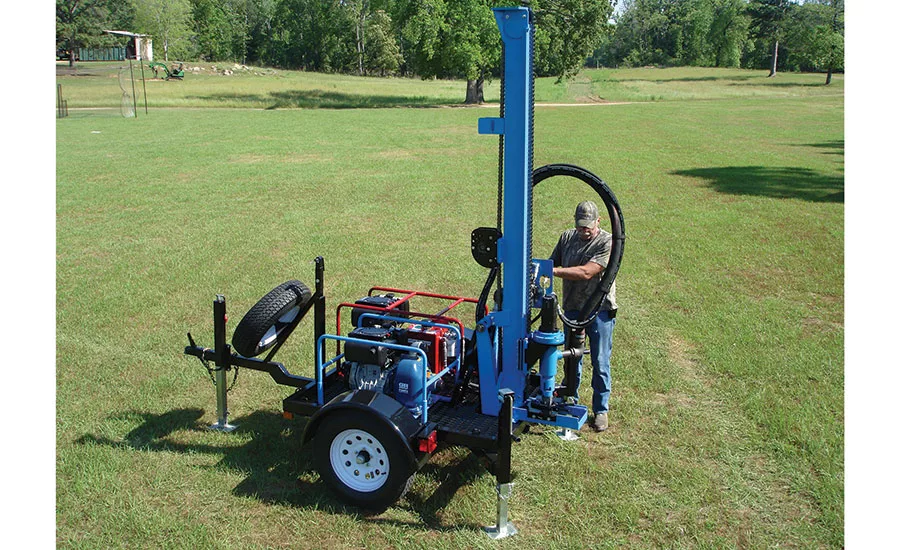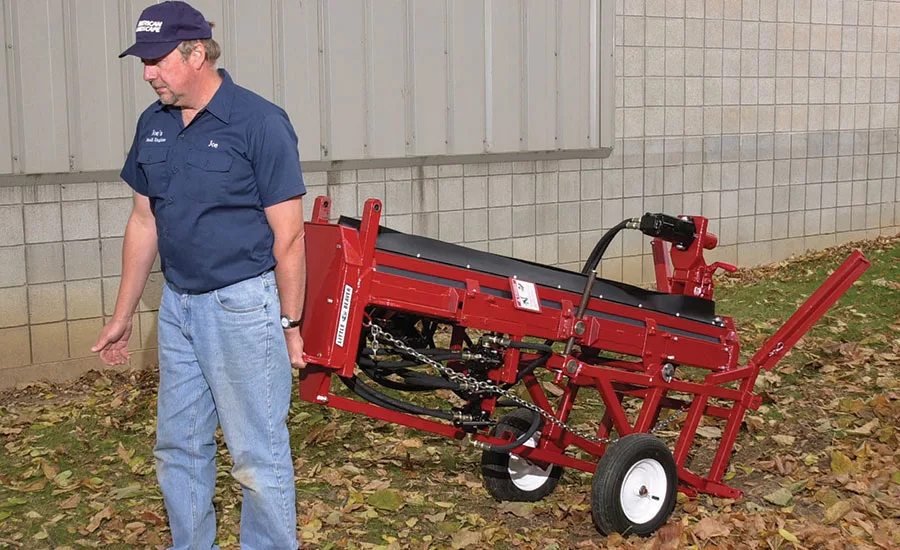Compact Drills Can Speed Up Soil Sampling For Geotechnical Engineers

A compact, trailer-mounted drill can expand job options for a geotechnical firm or drilling contractor. Source: Little Beaver

Some compact drills can be maneuvered by even one drilling contractor of geotechnical engineer. Source: Little Beaver
Standstills are the enemy of productivity. That’s why waiting around for someone else to conduct soil sampling tests isn’t an option for geotechnical engineers. At the end of the day, taking control of projects determines whether or not they move forward.
Article Index
- Go Small or Go Home
- Select a Drill Style
- Pick Productivity
- Decide Against Downtime
- Get a Drill for Any Project
Compact drills provide the perfect combination of power and compact size for engineers to take on soil sampling fast and efficiently. They mount on a trailer or transport wheels, providing excellent maneuverability on nearly any jobsite due to their light weight and small size. This gives engineers the convenience to easily sample soil themselves and get on to the next part of the project. Not only that, but it expands job opportunities.
Go Small or Go Home
Small machines provide the ideal balance of power at the right size to get a job done quickly. They get in and out of tight quarters or remote locations easily and drill down fast. For geotechnical engineers, they’re also an easy and relatively inexpensive way to grow business.
At as little as 26 inches wide and weighing roughly 700 to 1,000 pounds, compact drills offer the versatility and unique advantage for engineers to take on jobs themselves. This includes limited access applications, such as backyards with narrow gates. These powerful units reach 100-foot depths — all without damaging the turf or being forced to navigate and maneuver around nearby structures. They can successfully extract a sample 100 feet deep from virtually any soil type, although typically they’re used to depths of 50 feet. With these capabilities in a compact size, the drills offer excellent profit boosting potential for geotechnical engineers.
Soil sampling jobs typically cost thousands of dollars depending on the types of tests and area of the country. To get an average idea of cost savings, let’s say a technician charges $3,000 for a sample project. Given this information, a geotechnical engineer purchasing a quality compact drill ranging from $20,000-$30,000 could easily recover his or her investment in as little as six months. This means more money in the geotechnical engineer’s pocket as well as gaining the flexibility and freedom over when the tests are conducted rather than waiting on a soil sampling company.
Another consideration is operating cost. Because compact drills can be transported with a standard pickup truck, no special licensed operator is required. In addition, these units are economical to transport because of their size. Geotechnical engineers can skip the long wait lines for soil sampling, and take control of their project’s timeline. Plus, a compact drill easily helps to push a fast service message and repeat customers.
The dollars make sense. But, before buying a compact drill, do some research to ensure a fast ROI. Consider the manufacturer’s experience, the geographic area it will be used in, what the drill offers in terms of efficiency and maintenance requirements.
Select a Drill Style
When making a decision about which compact drill to purchase, choose from either the carriage-mounted drills or trailer-mounted units. To determine the right drill type, start by looking at the job location.
For residential and developed areas, drills mounted on transport wheels provide the best solution. They weigh as little as 730 pounds, including the soil sampling attachments, making it easy for one person to maneuver around the worksite by hand. The compact frame — which can be as narrow as 26 inches — allows a contractor to transport the unit and its power source through gates, narrow pathways and other limited-access areas.
For soil sampling work on new construction projects or in remote locations, turn to a trailer-mounted drill. Look for a unit that weighs about 2,000 pounds; that’s light enough to be pulled with an ATV or pickup but heavy enough to get the job done. These units typically drill up to 100 feet and collect samples for determining required depths for support piers or caissons.
Upon selecting the appropriate drill, work with the manufacturer to pick the sampling tools as well. An experienced manufacturer will be able to easily recommend the best-suited tool for the job. Choose the hollow stem auger when working in sandy soil where there’s risk of contamination from other soil or concern of hole caving problems. This method can be used to collect undisturbed samples, and avoids cave-in issues because it allows for drilling and casing the hole simultaneously. Select the split spoon sampler when completing the standard penetration rate test to obtain a packed sample. Operators collect a sample about every 4 to 5 feet to determine information, such as how deep to install piers for supporting a structure. When determining soil density and strength in fine cohesive soils and clays, pair the drill with the Shelby tube. The thin-walled tubes easily push into the ground to provide a fast method to get the job done.
Pick Productivity
Achieving maximum productivity requires a powerful drill with sufficient pushdown force to tackle a variety of soil conditions. Look for trailer-mounted and truck-mounted drills that achieve a pushdown force as high as 2,500 pounds. A strong, versatile drill easily collects samples up to 16 inches in diameter to accommodate a variety of soil sampling projects.
Before purchasing or renting a drill, consider how easy it is to add auger or drill pipe extensions for reaching a variety of depths. Some manufacturers design trailer-mounted drills so a contractor can use a wrench to loosen and tighten the extensions onto the mast. Other drills easily thread an extension or snap one into place without tools.
Decide Against Downtime
Breakdowns are the last thing a geotechnical engineer needs when soil sampling. Careful consideration of the manufacturer’s reputation and the unit’s fit and finish ensures operators withstand harsh environments, common in soil sampling applications.
Start by checking the drill’s key components. The fit and finish of the drill provide a lot of insight on quality and durability. Select a drill that features an engine that’s easy to maintain, made by a proven manufacturer, lasts longer and has more readily available parts. Confirm that high-strength welded steel makes up the drill’s frame, rotary and swivel so it withstands harsh work conditions. A powder-coat finish provides good protection against corrosion. It also holds its color after years in the field, saving on repainting costs and helping with resale value.
Even the best-built units require preventative maintenance. Make sure all maintenance points are easily accessible. Also, look for manufacturers that provide technical advice, troubleshooting and reliable parts service.
Ask what process the manufacturer uses before shipping the drill as well. Is it tested and inspected? This confirms the drill will perform as expected.
Get a Drill for Any Project
Geotechnical engineers are always looking for ways to save time and keep projects moving. With a portable, powerful drill that’s economically priced, it’s simple to increase efficiency and profits. Compact drills allow engineers the flexibility and versatility to quickly meet market demand for soil sampling in a variety of spaces, instead of waiting for soil sampling companies to conduct tests. After a little research, it’s easy to select compact drills with maximum power and reliability. With these new drills, growth in residential and commercial jobs is nearly endless.
Looking for a reprint of this article?
From high-res PDFs to custom plaques, order your copy today!




